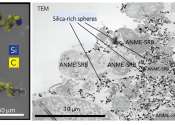Scientists slow down fast-acting brain protein to capture images
New groundbreaking images of one of the brain's fastest-acting proteins are providing critical clues that may lead to the development of targeted therapies to treat epilepsy and other brain disorders. The findings are published ...









